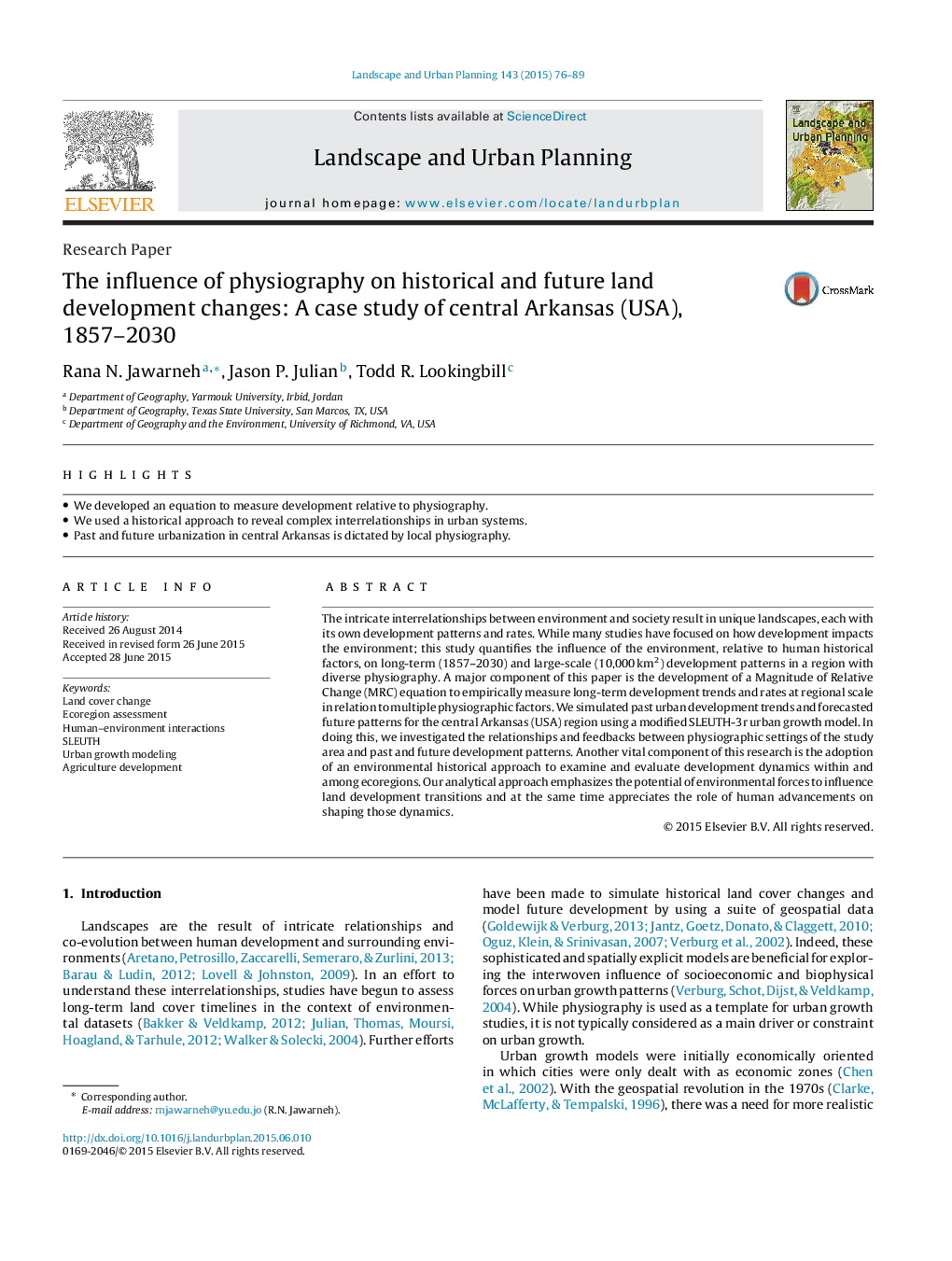| Article ID | Journal | Published Year | Pages | File Type |
|---|---|---|---|---|
| 7460974 | Landscape and Urban Planning | 2015 | 14 Pages |
Abstract
The intricate interrelationships between environment and society result in unique landscapes, each with its own development patterns and rates. While many studies have focused on how development impacts the environment; this study quantifies the influence of the environment, relative to human historical factors, on long-term (1857-2030) and large-scale (10,000Â km2) development patterns in a region with diverse physiography. A major component of this paper is the development of a Magnitude of Relative Change (MRC) equation to empirically measure long-term development trends and rates at regional scale in relation to multiple physiographic factors. We simulated past urban development trends and forecasted future patterns for the central Arkansas (USA) region using a modified SLEUTH-3r urban growth model. In doing this, we investigated the relationships and feedbacks between physiographic settings of the study area and past and future development patterns. Another vital component of this research is the adoption of an environmental historical approach to examine and evaluate development dynamics within and among ecoregions. Our analytical approach emphasizes the potential of environmental forces to influence land development transitions and at the same time appreciates the role of human advancements on shaping those dynamics.
Keywords
Related Topics
Life Sciences
Agricultural and Biological Sciences
Ecology, Evolution, Behavior and Systematics
Authors
Rana N. Jawarneh, Jason P. Julian, Todd R. Lookingbill,
